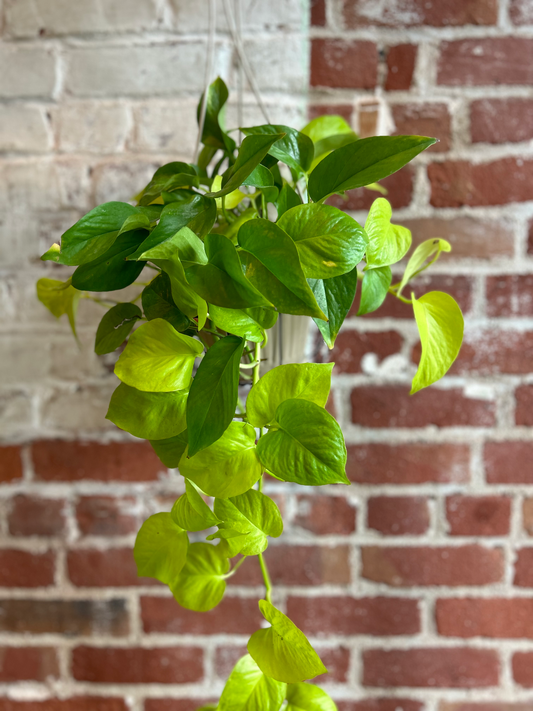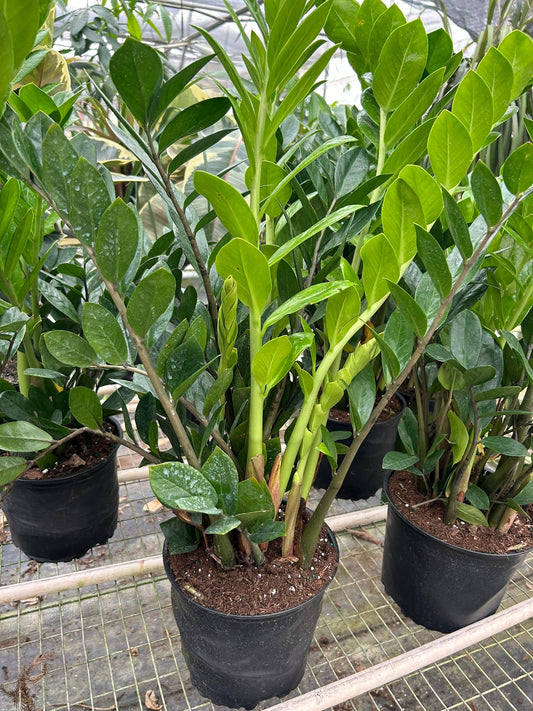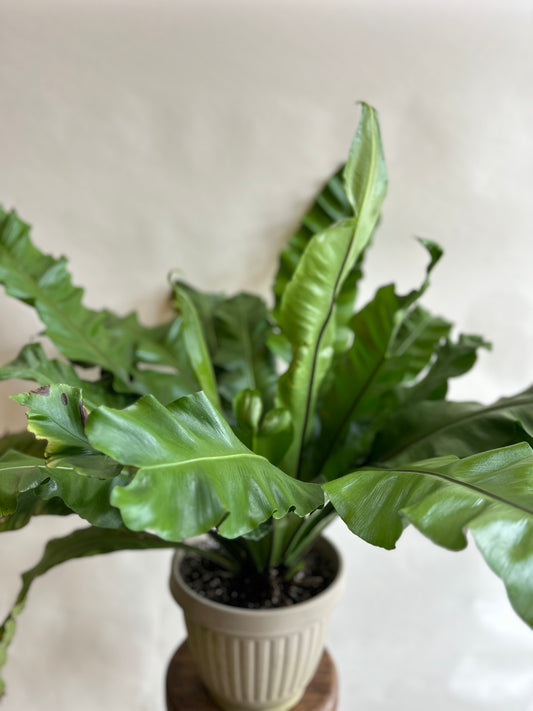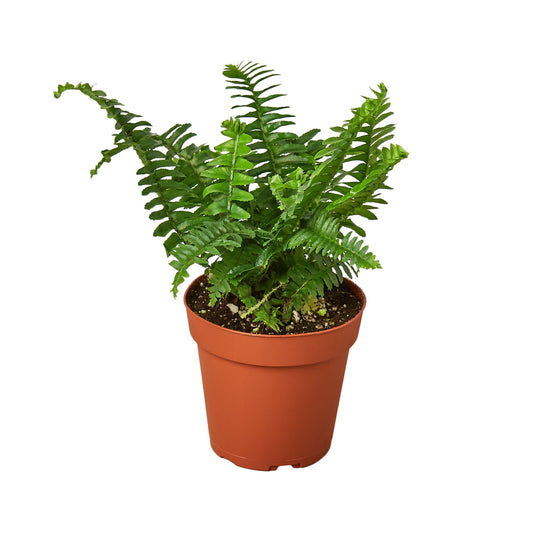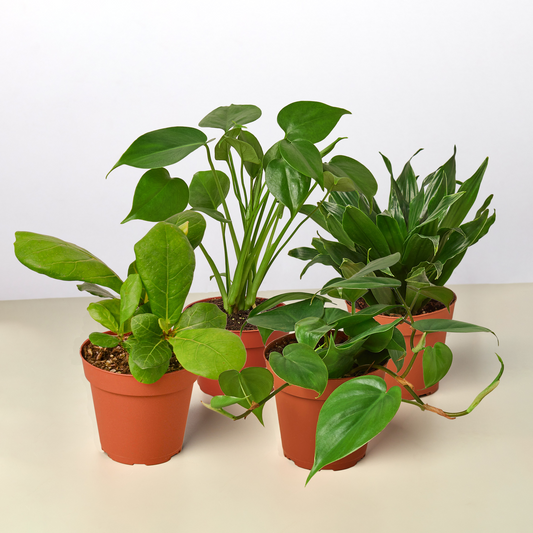Do You Need a Moss Pole For a Umbrella Plant?
Cafe Planta Team
When it comes to houseplants, the umbrella plant, or Schefflera, is a favorite for many plant lovers. Its glossy leaves and easy-going nature make it an attractive addition to any indoor space. But, like any plant parent might wonder, does an umbrella plant need a moss pole for optimal growth and aesthetics?
In this article, we'll explore what a moss pole does, whether your umbrella plant can benefit from one, and how to properly incorporate it into your plant care routine. We'll also touch on some related care tips for your umbrella plant to thrive. Let's get started!
Understanding the Moss Pole
Before deciding if your umbrella plant needs a moss pole, it helps to understand what a moss pole actually is. In simple terms, a moss pole is a support structure for climbing plants. It’s typically made of a wooden or plastic stake covered in sphagnum moss or coco coir. These materials retain moisture and give plants a surface to attach their aerial roots.
Moss poles are popular with plants like Monstera and Philodendron, which naturally climb trees in their native habitats. The pole mimics this environment, allowing these plants to grow upwards rather than sprawling out, which can save space and create a more structured appearance.
So, does this climbing aid suit an umbrella plant? Let's explore this question in the next section.
Do Umbrella Plants Climb?
Unlike many other popular indoor plants, umbrella plants are not natural climbers. This means they don't have the same aerial root system that climbing plants like Monsteras do. Instead, umbrella plants tend to grow upright with sturdy stems that support their own weight. They don't naturally wrap themselves around supports or poles.
However, this doesn't mean they can't benefit from a little structural assistance. While they don't climb, umbrella plants can become top-heavy as they grow taller, which might lead to leaning or even toppling over. In these cases, a support like a moss pole or a simple stake can help keep your plant upright and well-balanced.
So, while a moss pole isn't necessary for climbing purposes, it can still be useful for supporting a mature or particularly tall umbrella plant. Let's look at how you might introduce a moss pole to your plant.
Using a Moss Pole for an Umbrella Plant
If you decide to use a moss pole for your umbrella plant, you'll want to do so carefully to avoid damaging the roots or stems. Here’s a step-by-step guide:
- Choose the Right Pole: Opt for a moss pole that's slightly taller than your plant. This will give your umbrella plant room to grow without requiring frequent adjustments.
- Prepare the Pot: Make sure your plant is in a pot with enough room for the pole. You might need to repot if the current container is too snug.
- Insert the Pole: Gently insert the moss pole into the soil, taking care to avoid the main root ball. Position it close to the plant's main stem for optimal support.
- Secure the Plant: Use plant ties or soft string to gently secure the umbrella plant to the pole. Be careful not to tie too tightly, as this can damage the stem.
- Monitor Growth: As your plant grows, adjust the ties to accommodate new growth. This will ensure the plant remains straight and well-supported.
Using a moss pole in this way can be a proactive step if you notice your umbrella plant is starting to lean or is becoming too top-heavy. But how does this fit into the overall care routine for an umbrella plant?
Basic Care for Umbrella Plants
While we’re on the topic of moss poles, it’s worth revisiting some basic care tips for umbrella plants. These plants aren't particularly fussy, but giving them the right conditions will keep them healthy and lush. Here’s what you need to know:
Light
Umbrella plants prefer bright, indirect light. They can tolerate lower light levels, but their growth may slow and the plant might become leggy. If you notice your plant stretching towards a light source, it might be time to reposition it.
Water
These plants enjoy consistent moisture but don’t like to sit in soggy soil. Allow the top inch of soil to dry out between waterings, and make sure your pot has drainage holes to prevent waterlogging.
Humidity
While umbrella plants can tolerate average indoor humidity, they appreciate a bit of extra moisture in the air. Consider misting the leaves occasionally or placing the plant near a humidifier, especially in dry winter months.
Temperature
Keep your umbrella plant in a warm environment, ideally between 60-75°F (16-24°C). Avoid placing it in drafts or near cold windows, as temperature fluctuations can stress the plant.
With these care tips in mind, your umbrella plant should thrive. Next, let’s see how a moss pole can influence the aesthetics of your indoor space.
Designing Your Space with Moss Poles
Incorporating a moss pole doesn’t just support your plant; it can also enhance the overall look of your indoor garden. Moss poles can add a touch of vertical interest, creating a dynamic visual element in your home.
Here are a few ideas to consider when designing with moss poles:
- Create a Focal Point: Use a moss pole to draw the eye upward, emphasizing the height of your umbrella plant. This can be particularly effective in rooms with high ceilings.
- Mix and Match: Combine plants with different growth habits, like trailing and upright plants, around your moss pole to create an interesting mix of textures and shapes.
- Natural Aesthetic: The organic look of moss can add a natural, earthy feel to your decor. Pair it with wooden furniture or neutral tones for a cohesive look.
By thoughtfully placing and styling your moss poles, you can create a harmonious and visually appealing indoor garden. But like any plant accessory, moss poles require a bit of maintenance.
Maintaining Your Moss Pole
Once your moss pole is in place, it’s important to keep it in good condition to support your plant effectively. Here are some maintenance tips:
Moisture
Moss poles need to be kept moist to encourage your plant’s aerial roots to attach. You can do this by misting the pole with water during your regular plant care routine.
Inspection
Check the moss pole regularly for signs of mold or decay. If the moss starts to break down or look unhealthy, it might be time to replace or refresh it.
Pole Stability
Make sure the pole remains sturdy and upright. Over time, the weight of the plant can cause the pole to lean. If this happens, adjust the stakes or ties as necessary.
With these maintenance steps, your moss pole will continue to provide support and beauty for your umbrella plant. Now, what if you're not quite sold on the idea of a moss pole?
Alternative Support Options
If a moss pole doesn’t seem like the right fit for your umbrella plant or your aesthetic, there are other options you might consider:
- Simple Stakes: A basic wooden or metal stake can provide the necessary support without the added maintenance of a moss pole.
- Plant Rings: These are circular supports that can help keep your plant upright and prevent it from sprawling.
- Decorative Trellises: A trellis can offer support while adding a decorative element to your plant display.
These alternatives are low-maintenance and can be just as effective at keeping your umbrella plant standing tall. They also offer different stylistic choices to suit your taste and space.
Final Thoughts
While an umbrella plant doesn't necessarily need a moss pole for climbing, using one can help support a top-heavy plant and add an interesting visual element to your decor. It’s all about finding the right balance between plant needs and your personal style.
At Cafe Planta, we're here to help you with all your plant care questions. Whether you're looking for new plants to add to your collection or need advice on plant accessories, feel free to email us or reach out on Instagram. We love sharing our passion for plants and helping you create a beautiful, thriving indoor garden.


